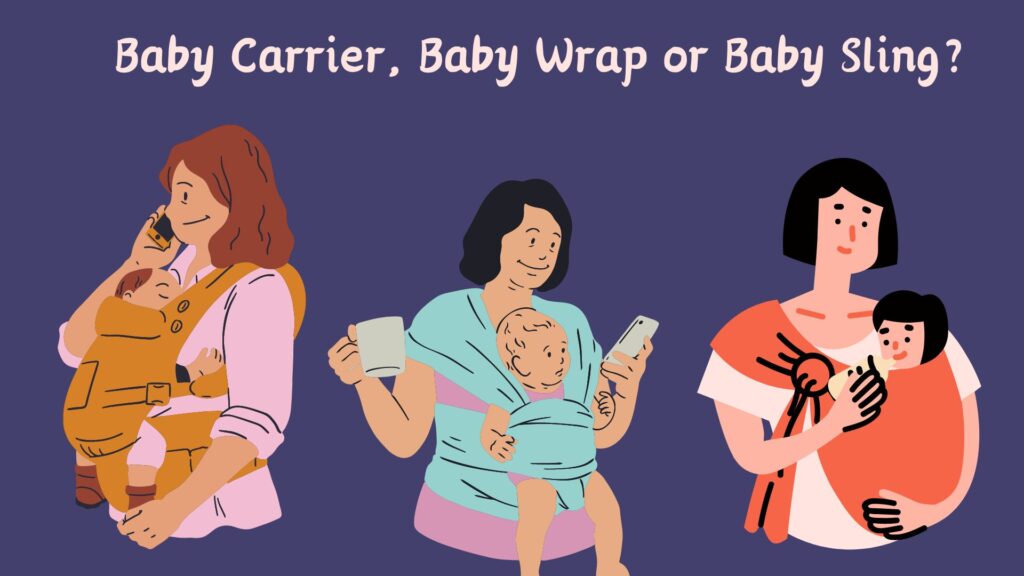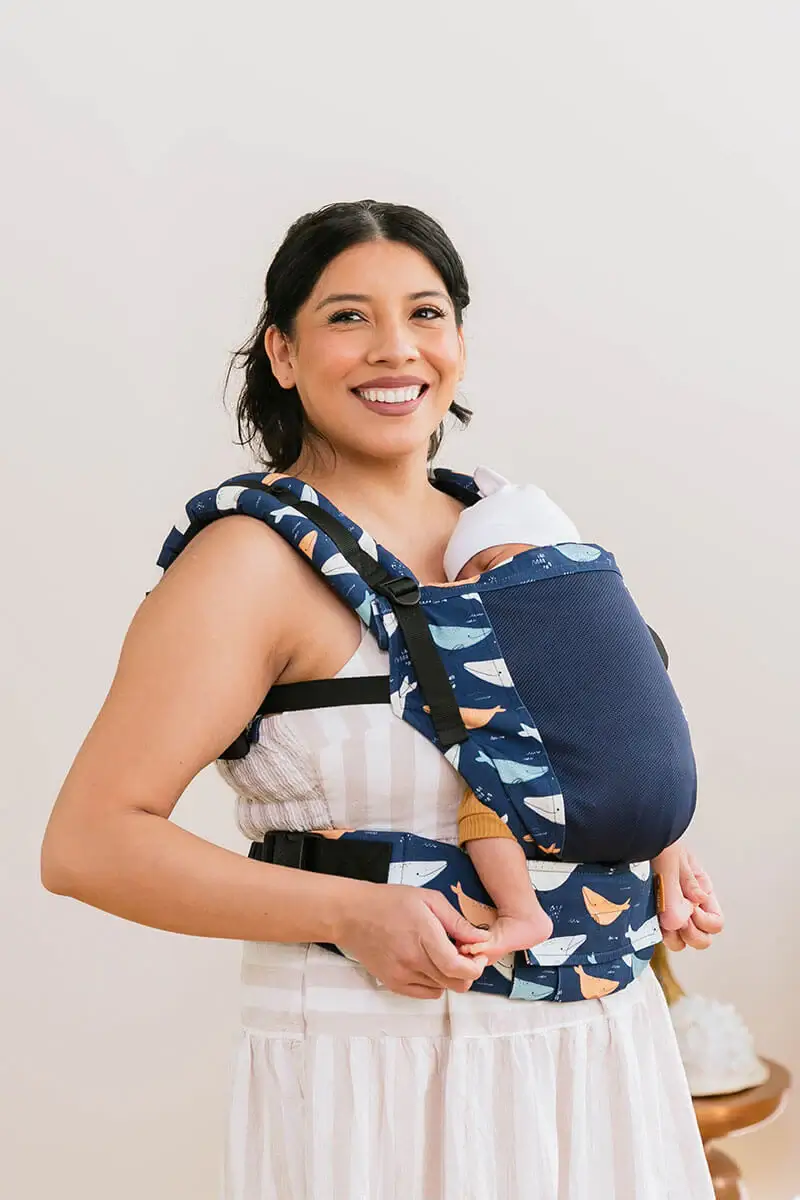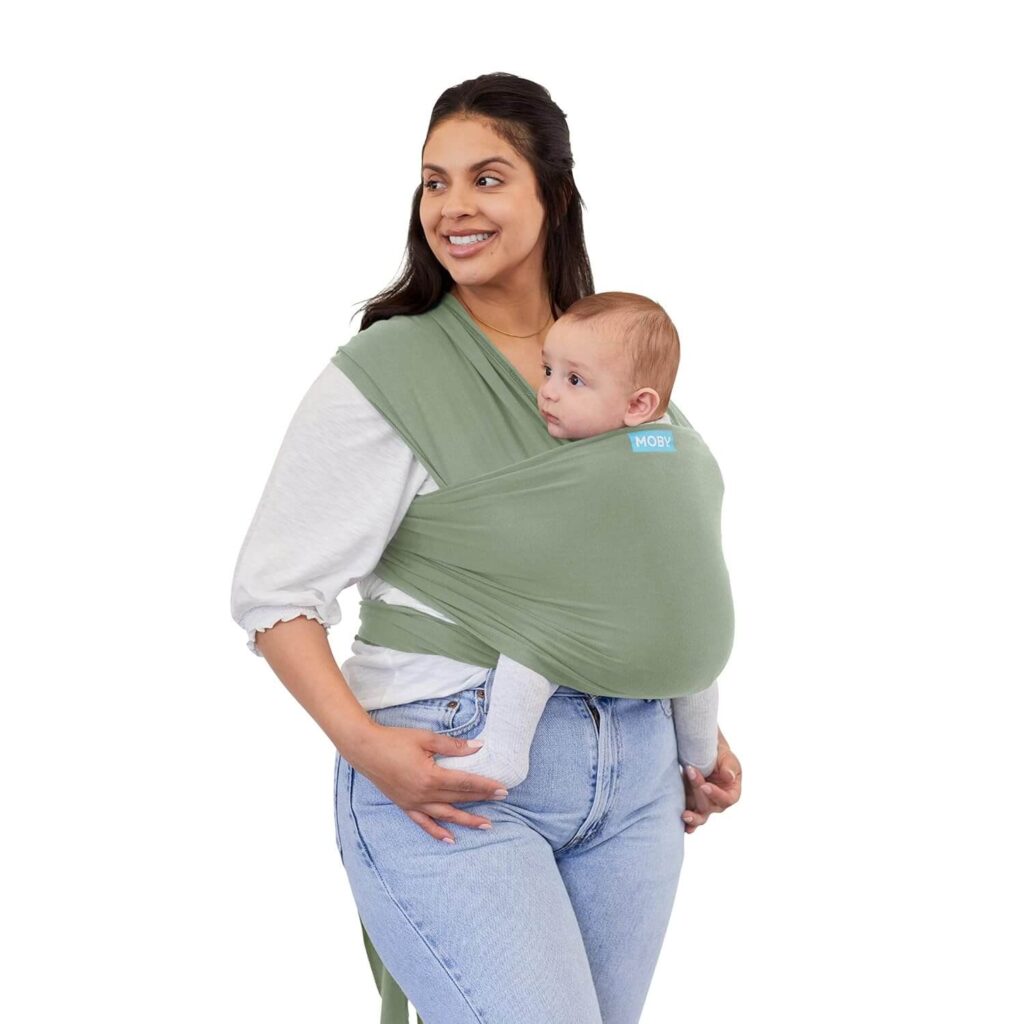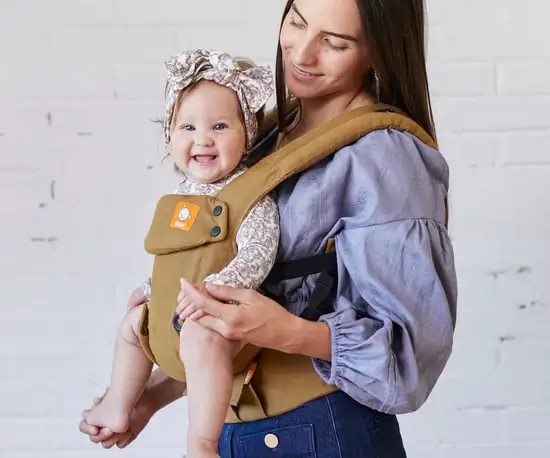
Introducing the Ultimate Guide for Moms: “Baby Carrier, Sling, or Wrap: Which Should You Use?”
Are you a new mom navigating the world of baby gear? Struggling to decide between a baby carrier, sling, or wrap? Look no further! This comprehensive guide is tailor-made just for you.
As a mother, your baby’s comfort and safety are your top priorities. That’s why understanding the nuances of each option is crucial. Discover the pros and cons of carriers, slings, and wraps, and learn how they can enhance your bonding experience with your little one.
Join us on this journey to confidently embrace motherhood with the best baby carrier by your side. Let’s embark on this adventure together!
What is a Baby Carrier?
Baby carriers or some might call it soft-structured baby carriers (SSCs) is a very popular bag pack like fabric that is made for parents to safely carry their newborns, infants or toddlers on themselves.
These carriers protect developing hips and parents’ packs by providing support where it’s needed for both parent and child.
These carriers are the most convenient for baby wearing as they are ready-made and no need to fold and wrap around the body.

What is a Baby Sling?
Baby sling is also another baby wearing tool, but to be worn over one shoulder only. They are pieces of fabric with two rings stitched at one end. The fabric’s tail hangs down, while the free end is looped around the rings to create a pouch for the infant.

What is a Baby Wrap?
Baby Wraps are lengthy lengths of cloth that wrap both you and your child. There are woven wraps materials and stretchy wraps types available, which both can be very cozy to the wearer and the baby. The material can cover your entire back without getting tucked in.

The Differences Between Baby Carrier, Sling, or Wrap
Baby Carrier
A baby carrier is a structured device with padded straps and buckles, designed to hold a baby securely against your body. Most carriers allow for multiple carrying positions – front, back, and hip.
Pros of Baby Carriers
Baby carriers are excellent for your families to spend time outdoors, for example, for long walks or hikes, providing ample support for both parent and baby.
Plus, the baby carrier is quick and easy to put on and take off, making it convenient for busy parents.
Different carriers models also offer multiple carrying positions, allowing versatility as your baby grows.
Cons of Baby Carriers
The cons of baby carriers however, they are bulkier compared to slings and wraps, which may make them less compact for travel.
Moreover, they may cost a lot more than slings or wraps, depending on the brand quality and features.
Plus, they have limited customization in terms of fit compared to wraps, although the brand; Baby Tula has a range of cute designs.
Baby Sling
A baby sling is a single piece of fabric that goes over one shoulder and creates a pouch for your baby to sit or lie down in.
Pros of Baby Slings
Baby Slings promote a close bond between parent and baby, as the baby can feel the parent’s heartbeat and warmth.
The material used to make these slings are usually lightweight and portable, ideal for quick errands or around-the-house tasks.
They are also adjustable for a custom fit, accommodating different body types and preferences. Lastly, they are more affordable and cheaper compared to baby carriers.
Cons of Baby Slings
The biggest drawback to baby sling is that it requires more practice to achieve proper positioning and comfort for both parent and baby.
Additionally, it may not offer and maintain as much back support for the wearer, especially with prolonged use due to the limited weight distribution, potentially causing strain on one shoulder or back.
Baby Wrap
A baby wrap is a long piece of fabric that’s wrapped around your body in various ways to securely hold your baby.
Pros of Baby Wrap
Baby wraps provide excellent support for newborns and infants, mimicking the cozy environment of the womb.
Versatile and customizable, allowing for various carrying positions to suit both parent and baby’s comfort, and promotes skin-to-skin contact and bonding between parent and baby.
An important factor of baby wraps is that they are more flexible compared to baby sling and baby carriers because you can layer them and secure on the body, although they may take time to learn to use.
Cons of Baby Wrap
Although, there is a learning curve involved in mastering the wrapping techniques, which may be daunting for some parents.
Also, because of how flexible the fabric is, it may stretch over time, requiring readjustment for optimal support.
Not as convenient for quick on-and-off use compared to structured carriers or slings.
Tips to Choose a Baby Carrier
With so many options on the market, how do you pick the one that’s right for you? Here are some tips for choosing a baby carrier to help guide your decision.
1. Consider Your Baby’s Age and Size
Different carriers are suitable for different ages and sizes. Newborns need head and neck support, and not all carriers provide this. As your child grows, you may need a carrier that can adjust to hold a larger, heavier child comfortably.
2. Think About How You’ll Use It
Will you be using the carrier for long walks, for quick trips to the store, around the house, or all of the above? If you plan to carry your baby for extended periods, look for a carrier with good support to prevent back and shoulder strain. If convenience is key, a sling or a simple-to-use structured carrier might be best.
3. Check For Safety and Support
Safety should always be your top priority when choosing a baby carrier. Look for a carrier that securely supports your baby, particularly their back, neck, and hips. The carrier should hold the baby tight enough against your body to prevent it from slumping and compromising its airways.
4. Comfort Is Key
Your comfort is just as important as your baby’s. Look for a carrier with wide, padded straps that distribute your baby’s weight evenly across your shoulders and hips. If the carrier causes discomfort or pain, you’ll likely use it less, no matter how much your baby likes it.
5. Test It Out
If possible, try before you buy. This will allow you to see how easy it is to get your baby in and out of the carrier and adjust it for a comfortable fit. Some baby stores even have weighted dolls so you can really get a feel for what it’s like to wear the carrier.
6. Ease of Cleaning
Babies are messy, and your baby carrier will need to be cleaned regularly. Look for a carrier that’s machine washable or has removable parts that make it easier to clean.
Recommended Baby Wearing Brands
Now that you know the differences between those 3, I have provided a couple of recommendations for the best and most favorite baby carrier to be used.
Baby Tula
The Baby Tula carrier is a popular choice among parents for its comfort, versatility, and stylish designs.

Key Features:
The Baby Tula carrier is ergonomically designed to support both the baby’s and wearer’s comfort. It typically offers front carry (facing inward), back carry, and hip carry options.
There is extra comfort for the wearer and helps distribute the baby’s weight evenly. Straps and waistband are adjustable to accommodate different body sizes and types.
Pros:
- Easy to adjust for a customized fit.
- Wide range of fabric designs to suit personal style preferences.
- Suitable for infants through toddlers.
Cons:
- Can be bulky for some users, especially when not in use.
- May have a higher price point compared to some other carriers on the market.
- Limited airflow in warmer climates, especially with certain fabric options.
Ergobaby Baby Carrier
The Ergobaby carrier is a popular choice among parents seeking comfort, support, and versatility in babywearing.

Key Features:
The Ergobaby carrier is renowned for its ergonomic structure, supporting the baby’s natural sitting position and the wearer’s body.
They offer flexibility to adjust the carrier to fit different body sizes and the baby’s growth stages, and provides enhanced comfort and weight distribution for the wearer.
Some models feature convenient storage pockets for essentials like keys, phone, or baby items.
Pros:
- Easy to adjust for a personalized fit, making it suitable for parents of different body types.
- High-quality construction and durable materials ensure longevity.
- Suitable for newborns up to toddlers.
Cons:
- Bulkier compared to some other carriers, which may be less convenient for travel or storage.
- Higher price point compared to some entry-level carriers.
- Limited airflow in warmer climates, although some models offer mesh panels for breathability.
Summary
In conclusion, the best baby carrier for you depends on your personal preference, lifestyle, and comfort. Take your time, do your research, and don’t be afraid to try a few different styles before making a decision. Happy babywearing!
Wondering how to use a baby carrier? Check out here for helpful tips and videos.
FAQs
What factors should I consider when deciding between a baby carrier, sling, or wrap?
When choosing between a baby carrier, sling, or wrap, consider factors such as your baby’s age and size, your comfort and mobility needs, and your lifestyle.
Baby carriers are typically structured with padded straps and waist support, making them suitable for longer outings and older babies.
Slings offer a cozy, customizable fit and are great for quick trips or newborns. Wraps provide versatility in carrying positions and are ideal for newborns and those seeking a snug, customizable fit.
Are baby carriers, slings, and wraps safe for newborns?
Yes, when used properly, baby carriers, slings, and wraps are generally safe for newborns. However, it’s essential to follow manufacturer guidelines and ensure proper positioning to support the baby’s airway and spine.
Newborns should have their face visible and close enough to kiss, with their chin off their chest, to prevent suffocation. Additionally, always monitor your baby while babywearing and make adjustments as needed for comfort and safety.
Can baby carriers, slings, or wraps help with bonding between parent and baby?
Yes, baby carriers, slings, and wraps can facilitate bonding between parent and baby by providing close physical contact and promoting skin-to-skin contact.
The gentle motion and warmth from the parent’s body help soothe babies and promote feelings of security and attachment. Babywearing also allows parents to engage in everyday activities while keeping their baby close, fostering a strong bond through shared experiences.





